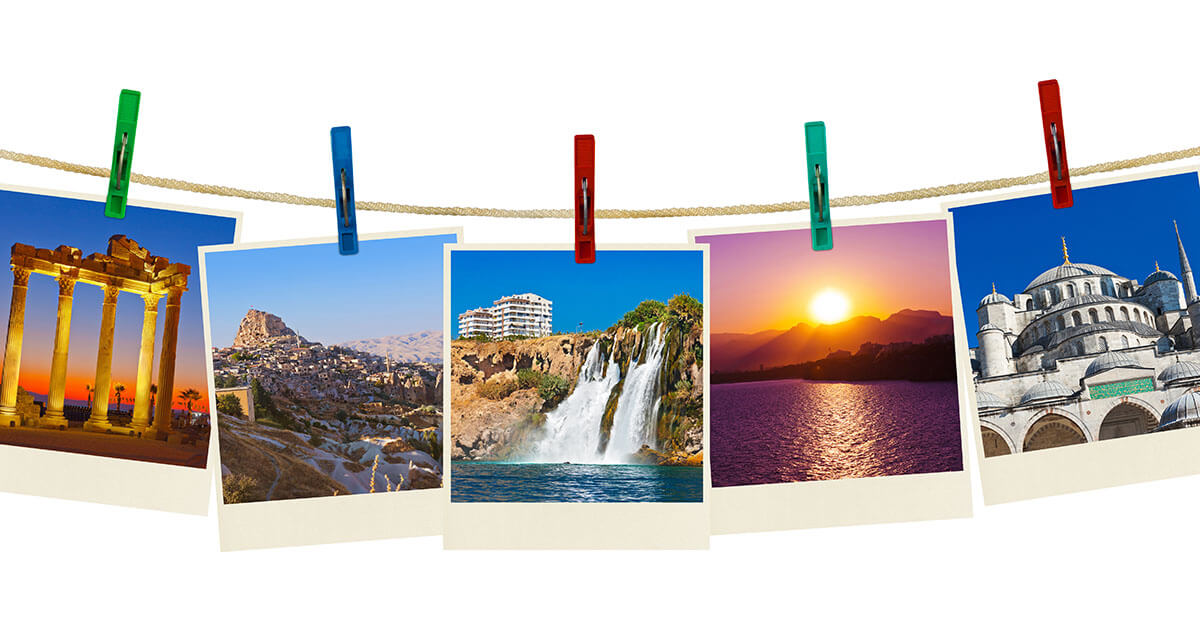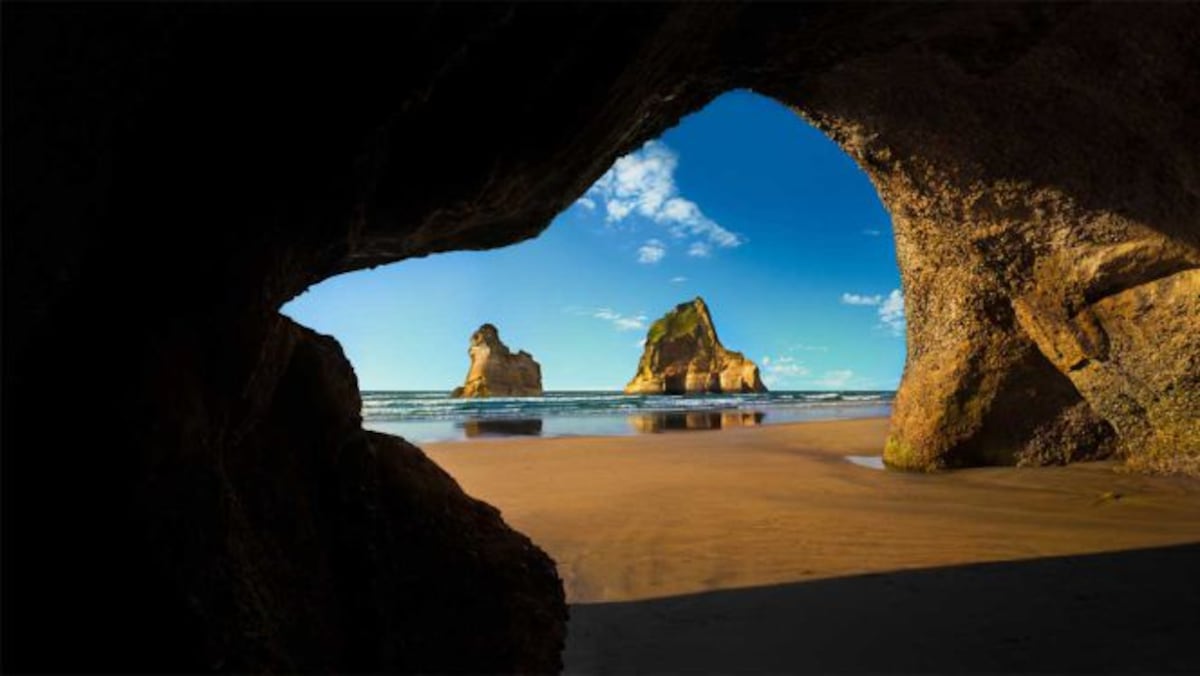- The Bliss photo of Windows XP was captured in 1998 by Charles O'Rear in California after a plague left the hill free of vineyards.
- Microsoft bought the exclusive rights to Windows XP, making it the most viewed digital image in history.
- The landscape changed after the photo: now the hill is covered with vines again, not green grass.
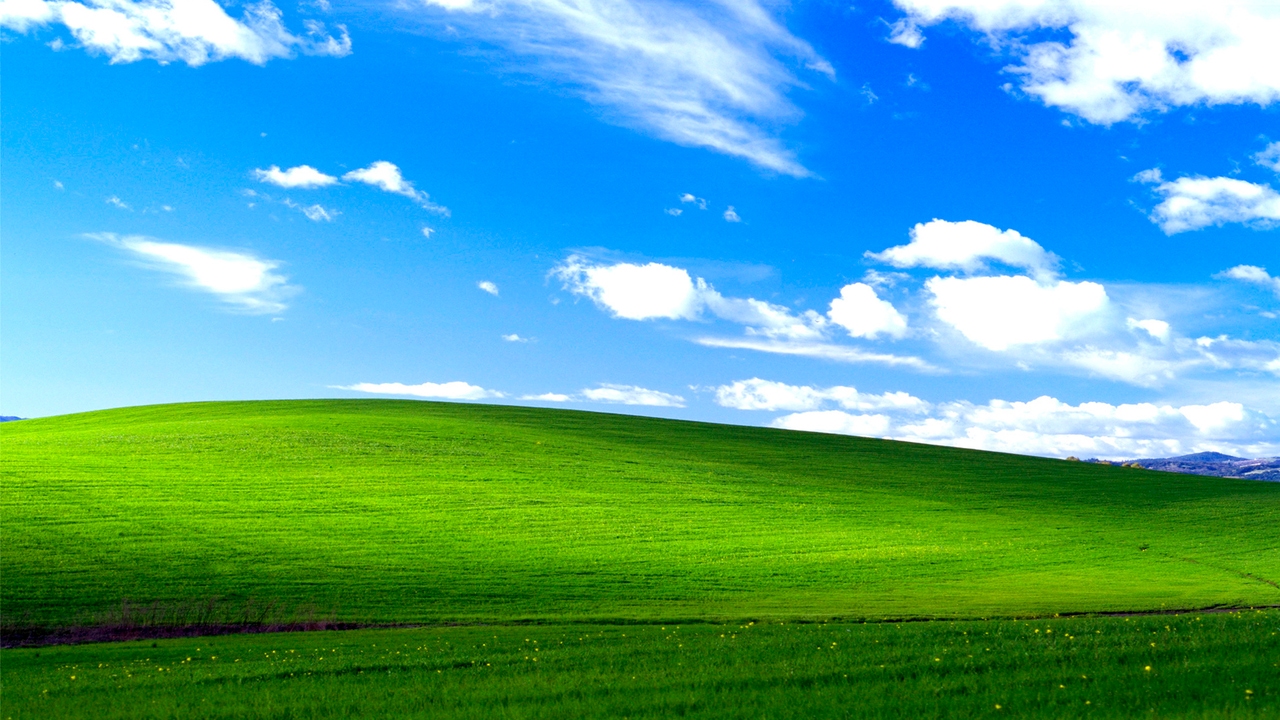
For more than two decades, the image of a green hill under a radiant sky has been embedded in the collective memory of millions of people thanks to the Windows XP start screen. This photo, which conveys serenity and nostalgia, was not created by chance or digital means. It is the fruit of a fascinating story, full of coincidences and curiosities that few people know in detail.
The story behind the legendary Windows XP wallpaper, known as Bliss, is much more complex and surprising than it appears at first glance. Its origin, the secrets of its composition, the incredible price paid for its acquisition, and the cultural impact it has had over the years make up a story that deserves to be told in detail. Below, we explore each relevant aspect and the evolution of this iconic landscape.
The birth of a legendary image
Bliss was born on a highway in Sonoma County, California, in January 1998 (although some media outlets refer to it as 1996), when Charles O'Rear, a veteran National Geographic photographer, decided to stop and see a landscape that seemed irresistible. The moment was key: days of winter rain had just passed, the grass looked a green alive and the sky was adorned with white clouds and bright sunlight. O'Rear, alert to any photographic opportunity, He took advantage of this combination of unrepeatable factors to capture the image which would later travel around the world.
The hill portrayed was not simply a virgin field, but rather a plot of land that had just been cleared of vineyards after a devastating phylloxera plague. This situation, which left the land clear and covered in grass, was a fundamental coincidence; before and after the time of the photograph, the site was and is occupied by vineyards. O'Rear himself went so far as to say that the image was the result of a lucky alignment of circumstances., both climatic and human.
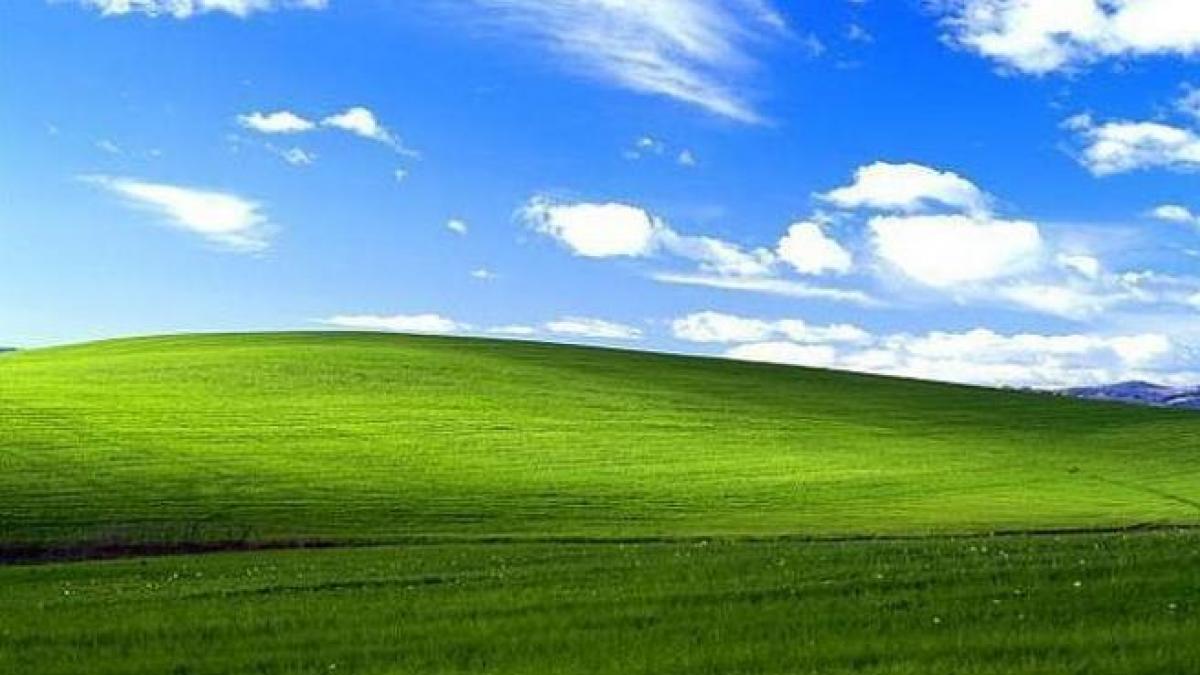
To achieve the saturation and vividness of the colors, O'Rear used a Mamiya RZ67 medium format camera and Fuji Velvia film, Known for its ability to naturally enhance greens and blues. The photographer claimed that if he had used 35mm film or a different type of film, the result would have been completely different, less visually striking. Despite the conspiracy theories that have circulated for years, The photograph is completely real, analog and has no digital manipulation.; neither Photoshop nor other tools intervened in its final result.
From reel to desktop: the Microsoft acquisition
The story of how a simple image became the default background of Windows XP is worthy of a movie. In May 1998, shortly after it was taken, the photograph was transferred to the Westlight stock agency, which was later acquired by Corbis, owned by Bill Gates. Thus, Bliss became available in the image database, waiting to be discovered.
Between the late 90s and 2000, the Windows XP development team was looking for an image that embodied the idea of tranquility, optimism and naturalness for their new operating system. Microsoft wanted to break away from the seriousness and coldness of previous backgrounds and convey confidence and well-being to users from the very first moment.
The developers, while reviewing image catalogs, came across Bliss and were captivated. So much so, that They decided not only to license the image as a background, but to buy it exclusively, acquiring all its rights.The purchase process was so unusual that, upon learning of the negative's high value, courier services refused to transport it for insurance reasons. Microsoft, aware of the asset's importance, paid for Charles O'Rear's plane ticket to personally deliver the original to its Seattle offices.
El The exact amount was never published due to a confidentiality agreement., but the photographer himself has stated that it was the second largest sum ever paid for the rights to a single photographic image, probably a six-figure figure.
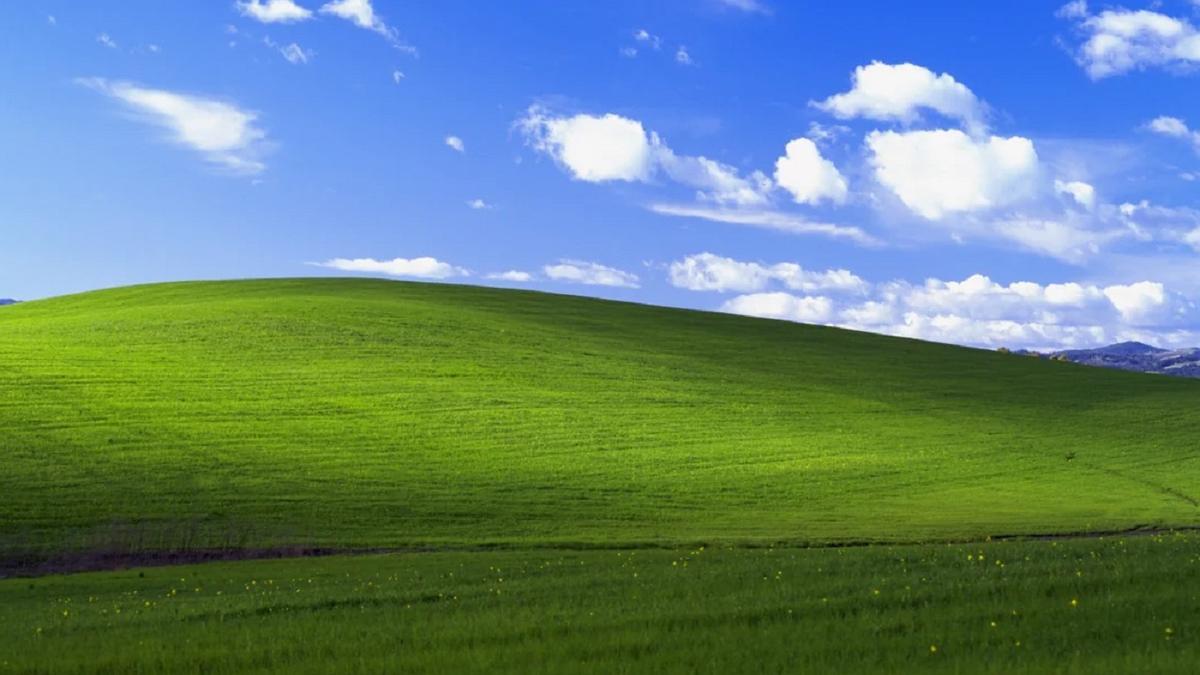
Bliss: universal symbol of the digital age
The Windows XP operating system was released on October 25, 2001, and with it the image of Bliss became the most viewed in the history of the OSThe impact of photography was enormous, and to this day, it is still considered the most recognizable digital image of the 21st century.
Its exposure was such that it is estimated that billions of people around the world viewed it at some point.With over 800 million users at the peak of XP's popularity, and continued use for years, the most conservative estimates put it at billions of views. Some consider it the most viewed photograph in history, although this figure is impossible to prove exactly.
Their choice was no coincidence. Microsoft was looking for a tension-free, peaceful, and universally appealing image., which could connect with both children and adults as well as with people from different cultures. The harmonious landscape, the absence of distractions, vibrant colors and rounded shapes were perfect for projecting the idea of a close and friendly technology, moving away from the grayish aesthetics of previous systems.
Bliss didn't just serve as a wallpaper: It was used extensively in Microsoft's advertising campaigns, presentations, and corporate materials., becoming part of the company's visual identity.
Where is Bliss Hill and how has it changed?
The landscape in the photo Bliss exists and is perfectly localizable in Napa Valley, California., near the Sonoma County line. In fact, the exact location has become a tourist spot for computer nostalgics, although those who visit today may be in for a surprise: the current reality is far from the idyllic image we all associate with the Windows XP background.
After the photograph was taken, the landowners replanted the original vineyards, which had been wiped out by the phylloxera plague prior to 1998. Today, the site is once again covered in vines, and the appearance of perfect lawns has almost completely disappeared. The contrast between the before and after is so stark that many visitors are disappointed when searching for the perfect photo.
However, The area is perfectly identified in Google Maps and Street View under the name "Windows XP 'Bliss' Hill," and travelers can see for themselves how agricultural development has returned nature to its former state. The green postcard was just a brief interval between two stages of winemaking.
Numerous photographers and even digital artists have attempted to recreate the original image, but it's impossible to match the conditions that existed almost three decades ago. Neither the light, the greenness of the grass, nor the exact composition can be replicated, which adds even more value to O'Rear's photo.
Nostalgia, popular culture and curiosities
Bliss was not just a wallpaper, but a true cultural emblem for several generationsIt is part of the sentimental memory of those who grew up with a computer at home, studied in computerized schools, or worked in offices with Windows XP factory-installed.
The success was so resounding that the image gave rise to all kinds of theories and urban legends: Many believed for years that it was a digital recreation, a 3D render or even a manipulated painting.Some international versions of the operating system renamed the photo, fueling speculation; in the Netherlands, for example, it appeared as "Ireland," and in other countries, it was thought to have been taken in places as far away as Switzerland, New Zealand, or Germany.
Charles O'Rear himself had to clarify again and again that the photo was completely real and taken in California., and in several interviews he has recalled that Microsoft also began to doubt its authenticity after the initial Windows XP fever.
The image became an aesthetic reference for other photographs used in Windows over the years, and was the subject of parodies, homages, and recreations in all kinds of contexts, from memes to marketing campaigns. Among the most notable nods are the special screensaver Microsoft launched in 2001 and the limited-edition Christmas sweater with the Bliss background, which went on sale in 2023 for charity.
The life and legacy of Charles O'Rear after Bliss
Charles O'Rear was already a well-known photographer before Bliss, but the fame he achieved with this image overshadowed much of his previous career. He had worked for National Geographic and other major media outlets, and after the image was sold to Microsoft, he continued photographing vineyards and landscapes around the world. He currently resides in California, where he keeps a framed copy of Bliss and has participated in exhibitions and projects about the impact of the most famous wallpaper of all time.
In interviews, O'Rear has expressed both pride and some frustration: If he had negotiated a commission for each viewing, he would have made an even bigger fortune.. In any case, the agreement with Microsoft allowed him to travel and continue developing his passion for photography.
Interestingly, despite having made its mark on legions of Windows users, O'Rear is a user of Mac, something that has sparked no small amount of jokes among tech enthusiasts. He's also collaborated on campaigns that pay homage to Bliss, such as the photo series for Lufthansa that attempted to emulate the feeling of "visual happiness."
Bliss's unparalleled impact on visual culture
The value of Bliss goes beyond its technical or commercial aspectAccording to critics and aesthetic experts, the image achieved a balance between simplicity and beauty that made it unforgettable. Without branding, noise, or text, it conveys peace and hope. It represented a paradigm shift in the relationship between users and computers: devices ceased to be cold tools and became everyday objects we could coexist with in a friendly way.
The power of the image lay in its universality. Critics such as David Clark and Hannah Rooke have defined it as a visual metaphor for peace, nostalgia and natural charm.Others have compared it to the work of Ansel Adams, and the phenomenon transcends stock photography to become a symbol of a specific era: the dawn of the home internet and the explosion of personal computing.
Although operating systems have evolved and digital landscapes have changed, Bliss remains an irreplaceable reference in the history of technology.The feeling of well-being that this simple hill conveyed lives on in the memories of those who saw it hundreds or thousands of times when they turned on their computers.
Some scholars have even gone so far as to analyze what Bliss represents in cultural terms, describing it as “the backdrop of the digital collective subconscious,” and many designers believe its influence lives on in today's backgrounds, both on Windows and other systems.
The brief window in which the Bliss landscape existed as we know it was a stroke of unrepeatable luck: rainy years, no vineyards, saturated colors, and the skill of a professional photographer. That a simple anonymous image has been etched into the retinas of billions is the greatest demonstration that, sometimes, beauty emerges from chance and endures thanks to fortunate decisions and the power of technology to spread it.
Passionate writer about the world of bytes and technology in general. I love sharing my knowledge through writing, and that's what I'll do on this blog, show you all the most interesting things about gadgets, software, hardware, tech trends, and more. My goal is to help you navigate the digital world in a simple and entertaining way.
